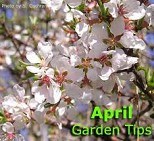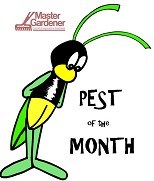DISEASE MANAGEMENT STRATEGIES USING ORGANIC FUNGICIDES
When confronted with a disease, many homeowners say they prefer to use organic products because they are more environmentally friendly. Others say they just want to use a product that works, regardless of the ecological impact. Many organic fungicide products can satisfy the needs of both groups in one container, providing effective control with minimal ecological impact. However, improperly using any chemical (organic or otherwise) will result in poor control and may harm non-target organisms. This article offers strategies for properly using organic fungicides and describes various kinds of these products.
Plant Health Management
Effectively using organic fungicides (or any fungicide for that matter) requires a solid plant health management strategy. Good plant health management focuses more on the actual plant, rather than just the pest or pathogen, including:
- Identify the right plant for the site
- Use resistant varieties (when available)
- Practice strategies that help keep plants healthy and avoid insect and disease problems in the first place.
The key to effective plant health management is prevention. Do your homework before planting by carefully matching plants that are appropriate to the type of soil, sunlight levels and watering conditions of the site. Once the plants are in the ground, successful plant health management relies on cleaning up plant debris, appropriate fertilization and necessary pruning practices. Using pesticides may be one part of a plant health program but it is never the sole strategy for plant health management.
Be Certain Before You Spray
Before applying any pesticide, you must properly diagnose the problem before implementing any management program. The most accurate diagnosis, however, will come from contacting your local Cornell Cooperative Extension Office. After accurately diagnosing the problem, the next step is to identify which fungicide is best for the problem you wish to manage.
Carefully follow the labeled rates for any pesticide. Too often, users apply fungicides at higher rates than specified on the label, hoping for better control or a more lasting effect. However, over-applying a fungicide like this is dangerous for the plant, the applicator and the environment. The application rates on a fungicide label are the most effective amounts needed for control. If these rates do not achieve reasonable control, it is often the result of choosing the wrong fungicide for the problem, making an incorrect diagnosis or applying the chemical at the improper time – not applying an inadequate amount. It is also frequently necessary to repeat applications at intervals of seven, 10 or 14 days over the growing season to protect the new growth that has developed since the last spray, or to replace spray residues that are no longer effective because of weathering and chemical breakdown. Due to their nature, organic fungicides often require more frequent applications than their synthetic counterparts. Ultimately, following practices that prevent diseases is essential to successful organic gardening (or any type of plant health management) because established populations of plant pathogens don’t respond well to any chemical – organic or synthetic. Organic fungicides available for homeowners to use to prevent plant diseases include sulfur, copper, oils and bicarbonates.
Sulfur – can be a preventive fungicide against powdery mildew, rose black spot, rusts and other diseases. Sulfur prevents fungal spores from germinating, so apply it before the disease develops for effective results. Purchase sulfur as a dust, wettable power or liquid. Do not use sulfur if you have applied an oil spray within the last month – the combination is phytotoxic (plant-killing). Likewise do not use sulfur when temperatures may exceed 80F to reduce the risk of plant damage. Finally, never treat certain ‘sulfur-shy’ plants (including varieties of gooseberries, currants, apricots, raspberries and cucurbits) with sulfur. Lime-sulfur is a form of sulfur mixed with lime (calcium hydroxide) commonly used as a dormant spray, meaning do not apply it to plant foliage. Lime-sulfur is more effective than elemental sulfur at lower concentration; however, its strong, rotten-egg odor usually discourages its use.
Copper – several cooper fungicide formulations are available to organic growers. Regardless of the formulation, cooper fungicides effectively kill both fungi and bacteria. Sulfur is only fungicidal, but Bordeaux mixture (copper plus lime) is also bactericidal, which means that it can be effective against diseases caused both by fungi (such as powdery mildew, downy mildew and various anthracnose pathogens) and by bacteria (such as bacterial leaf spots and fire blight). Unfortunately, be cautious to prevent copper from damaging the host plant. Copper sulfate (also called bluestone) was one of the original forms of copper used as a fungicide. Bordeaux mixture combines copper sulfate with lime (calcium hydroxide), which acts as a ‘safener’ to neutralize the acidic copper sulfate – this reduces plant damage. Bordeaux mixture owes part of its success to its ability to persist through spring rains and adhere to plants.
Bordeaux mixture comes in several formulations. One of the most popular, effective and least phytotoxic formulations for general home garden and orchard use is the 4-4-50 formulation. The numbers translate into the number of pounds of copper sulfate (4) and pounds of lime (4) that should be in 50 gallons of water. Development of this formulation occurred because copper, like sulfur, can be phytotoxic. Young foliage is especially sensitive to copper, so if you apply Bordeaux mixture in the spring after the plants breaks dormancy (e.g. to prevent infection by the fire blight bacterium, Erwinia amylovera) use a weaker, more dilute formulation to reduce the risk of plant injury.
Take care when applying this fungicide to the young, tender leaves of apple (Malus spp.) pear (Pyrus spp.), plum (Prunus spp.) or rose (Rosa sp.), Ivy (Hedera sp.), pansy (Viola x wittrockiana), celery (Apium graveolens), strawberry (Fragaria sp.), azalea and rhododendron (Rhododendron spp.), dogwood (Cornus sp.), juniper (Juniperus sp.) and alyssum (Alyssum spp.).
For some diseases or late-season applications, some Bordeaux mixture labels recommend twice as much fungicide which translates into an 8-8-50 formulation. As always, refer to the label for recommended rates. Apply Bordeaux mixture when it’s hot (above 85F) may cause leaves to turn yellow and drop. Additionally, it can burn leaves if it rains soon after a Bordeaux application. Reduce the burn risk by adding an oil spray (see below) . Apply Bordeaux mixture as a dust or liquid formulation.
Oils – the most frequent use of oils is to manage insects. However, oils effectively manage powdery mildew on many plants but are significantly less effective against other leaf spot diseases. Several plant species are sensitive to oils, particularly black walnut (Jugland nigra) , maples (especially Japanese – Acer palmatum) and red maple (A. rubrum), hickories (Carya sp.), redbud (Cercis spp.), and smoke tree (Cotinus coggygria) as swell as the conifers: juniper (Juniperus spp.), cedars (Thuja sp. And Cedrus spp.), spruce (Picea spp.), and Douglas Fir (Pseudotsuga menziesii).
Horticulture Oils - Mineral oils are a type of refined petroleum product and horticultural oils are mineral oils distilled to remove impurities that can damage plants. The final formulations combine these oils with an emulsifying agent that allows the oil to mix with water. Most oils currently available are the ‘superior’ type, which means they are more highly refined, allowing their use over a range of conditions without phytotoxicity (assuming users follow the labels). Nonetheless, do not apply horticultural oil when the temperature exceeds 90F or falls below 40F. In addition, high humidity can prevent rapid oil evaporation which can contribute to plant phytotoxicity. Ideally, apply horticultural oil when the relative humidity is less than 65 percent so the oil can evaporate quickly.
Bicarbonates - recent research demonstrated that although baking soda (sodium bicarbonate) can be effective against plant diseases when used with oil, its sodium component could build up and become toxic to plants. Obtain good control and plant health, with potassium bicarbonate and ammonium bicarbonate, although different bicarbonate salts have produced different results in different plants, which make specific recommendations difficult. Furthermore, baking soda used along without combining it with oil is ineffective against most diseases. Therefore, it seems prudent to use ammonium bicarbonate or potassium bicarbonate, which have the added advantage in that they provide nitrogen and potassium (nutrients plans need), rather than baking soda which leaves behind toxic sodium.
Conclusion - managing plant disease problems during rainy seasons is a challenge. Successfully managing these problems organically requires carefully choosing the right plants, properly planting and maintaining them and quickly diagnosing any problems correctly before you apply any chemical.
Joanna Beckerman, Department of Botany and Plant Pathology, Purdue University. Source: Garden Clippings, September 2010.




